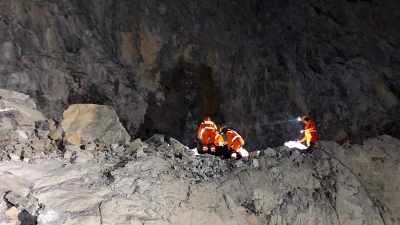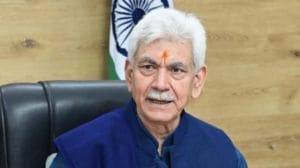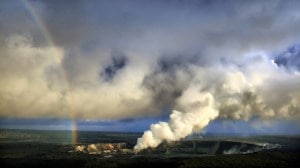In Is a River Alive? Robert MacFarlane deliberates if water bodies are meant for human use
At the core of the book is Macfarlane’s contention that if a river is alive, laws, politics and, most significantly, our perceptions, must change
 The book draws on three journeys (Amazon.in)
The book draws on three journeys (Amazon.in)Rivers seem to come into many people’s lives today when they overflow, or at times when they run dry. It is seen as a source of water, hydroelectric power or a harbinger of floods and destruction. This instrumentalist understanding of a water body is, however, a recent phenomenon. As Robert MacFarlane underlines in Is a River Alive?, the idea that water bodies are mainly meant for human use is contested even today. The worldviews of several indigenous communities have, for long, underlined the connections between humans and other elements of nature. The truth is, as MacFarlane points out, rivers are both “worshipped and mistreated”. “They give us metaphors to live by and decline our attempts to parse them. Unruly, fluid and utterly other, rivers are potent presences with which to imagine water differently”.
The book draws on three journeys. The first was to an Ecuadorian cloud forest named Los Cedros, the ‘Forest of the Cedars’, home to the headwaters of the Río Los Cedros, the ‘River of the Cedars’. Then MacFarlane visits the creeks, lagoons and estuaries of Chennai. His third journey takes the course of Mutehekau Shipu, or Magpie River, about 600 miles northeast of Montreal, the homeland of the Innu people. Interspersed between the accounts of these journeys are Macfarlane’s ruminations about a drought-stricken river near his Cambridge home. Particularly poignant is an interaction during which his son, Will, asks him the name of the book he is working on. “Is a river alive, ” I told him. ‘Well, that’s going to be a short book, then, Dad’”. On another occasion, Will asks his father about the water body in Cambridge: “Has the water died?”.
The conversation animates Macfarlane’s quest, and children are among his most interesting interlocutors. “Young children instinctively inhabit and respond to a teeming world of talkative trees, singing rivers and thoughtful mountains,” he writes. As one schoolgoer in South India tells the writer, “I would say a river is alive. When I sit with my legs in the river, up to my knees, I can feel the currents in the water pushing me, holding and pulling my legs. This is when the river is most alive to me – and I like it”.
The river’s enlivening quality is a central theme of Macfarlane’s work. We are all bodies of water,” he writes, “receiving, circulating, giving onwards; all participants in the hydrosphere, with the flow of the wet world running through us.” But the book also takes us to another grim reality. In Chennai, for instance, the writer finds that the city’s three rivers – the Kosasthalaiyar, Cooum and Adyar – pass through industrial wastelands to the sea, and they are little more than lifeless sewers, poisoned by heavy metals and prone to floods and drought. The water from the Kosasthalaiyar is so “slick with effluents and sewage that it is almost black”.
Is a River Alive is as much a travelogue as a piece of political writing. At the core of the book is Macfarlane’s contention that if a river is alive, laws, politics, and, most significantly, our perceptions, must change – his is an argument against human exceptionalism. “Words make worlds,” he points out. “In English, we ‘it’ rivers, trees, mountains, oceans, birds, and animals: a mode of address that reduces them to the status of stuff.” Macfarlane himself eschews pronouns like “that” or “which”, preferring instead to use “who” when referring to rivers and forests.
Macfarlane is more of a moral philosopher than an ecologist. Is a River Alive is persuasive, nevertheless. In lyrical prose, it nudges us to ask difficult questions: Can we desist from overusing water bodies? Are we, as one of his interlocutors asks, a client species for the river? Are there ways to bring the river back to cities, towns and villages? And there are even more difficult questions: If a river is alive, what to do when the water body refuses to adhere to the rhythms of the human world? How to deal with floods that both nurture and destroy?
But his journeys are not just about despair. On every trip, he encounters river warriors, fighting, often with their backs to the world, to save the water bodies – they hold agitations, write petitions on behalf of rivers and represent them in courts. He finds hope in the 2017 New Zealand law that afforded the Whanganui River protection as a “spiritual and physical entity”. He views the ruling of a court in Uttarakhand – the Ganga and Yamuna be seen as living entities – in a similar vein. In 2021, the Mutehekau Shipu became the first river in Canada to be declared a “living entity”. In Ecuador, the country’s constitution has saved water – and forests – from “plutocrats”.
Questions are likely to remain even when humans recognise the river as a living entity. Who speaks for the river? How to discern the desires of water bodies? How to compensate rivers when they are polluted or dammed? Macfarlane isn’t oblivious to such complexities. He warns of anthropomorphism that could often masquerade as speaking for the river. The writer instead makes a plea for humility before nature. As one of his fellow travellers tells the writer: “For it (the river) not to be merely disguised as a form of political manoeuvring between and among us humans, we’ll need to find ways to listen to it…And obviously needs to be happening not just among indigenous communities, or among artists and writers, but also state actors, corporate actors, industrial actors, the whole cast. The power holders”.






- 01
- 02
- 03
- 04
- 05

























